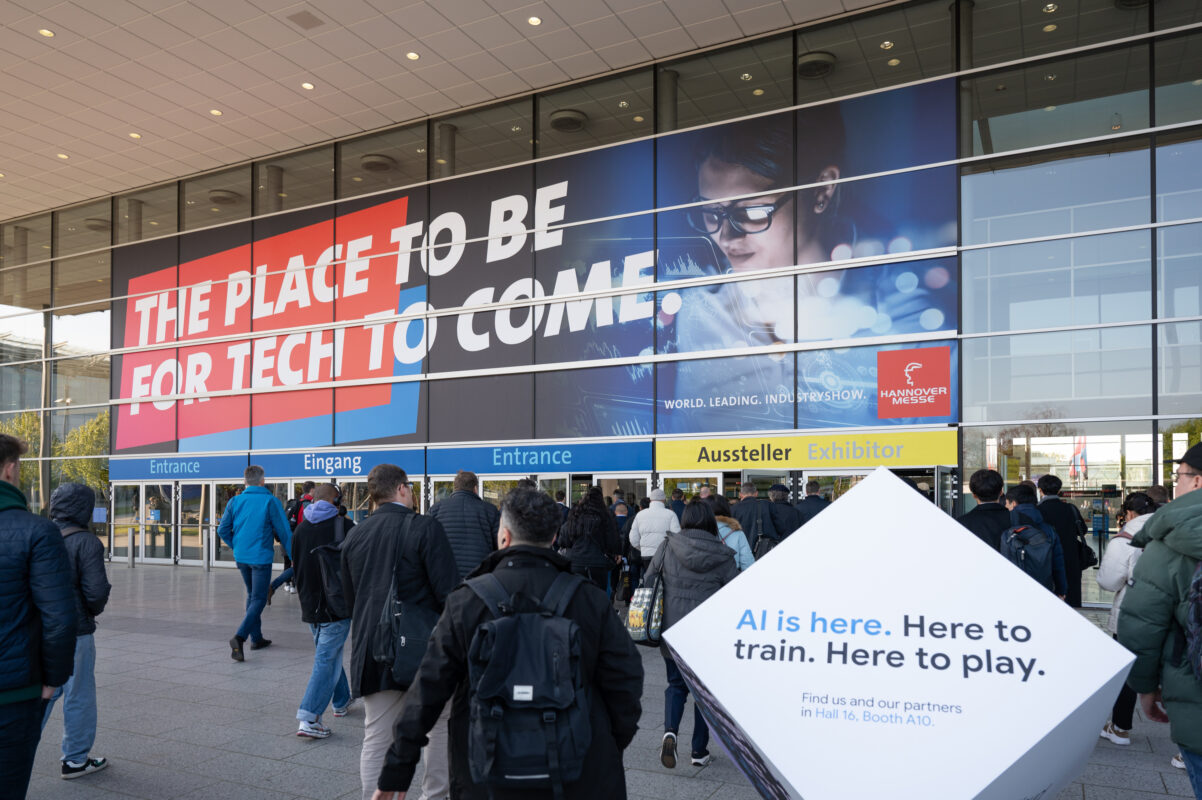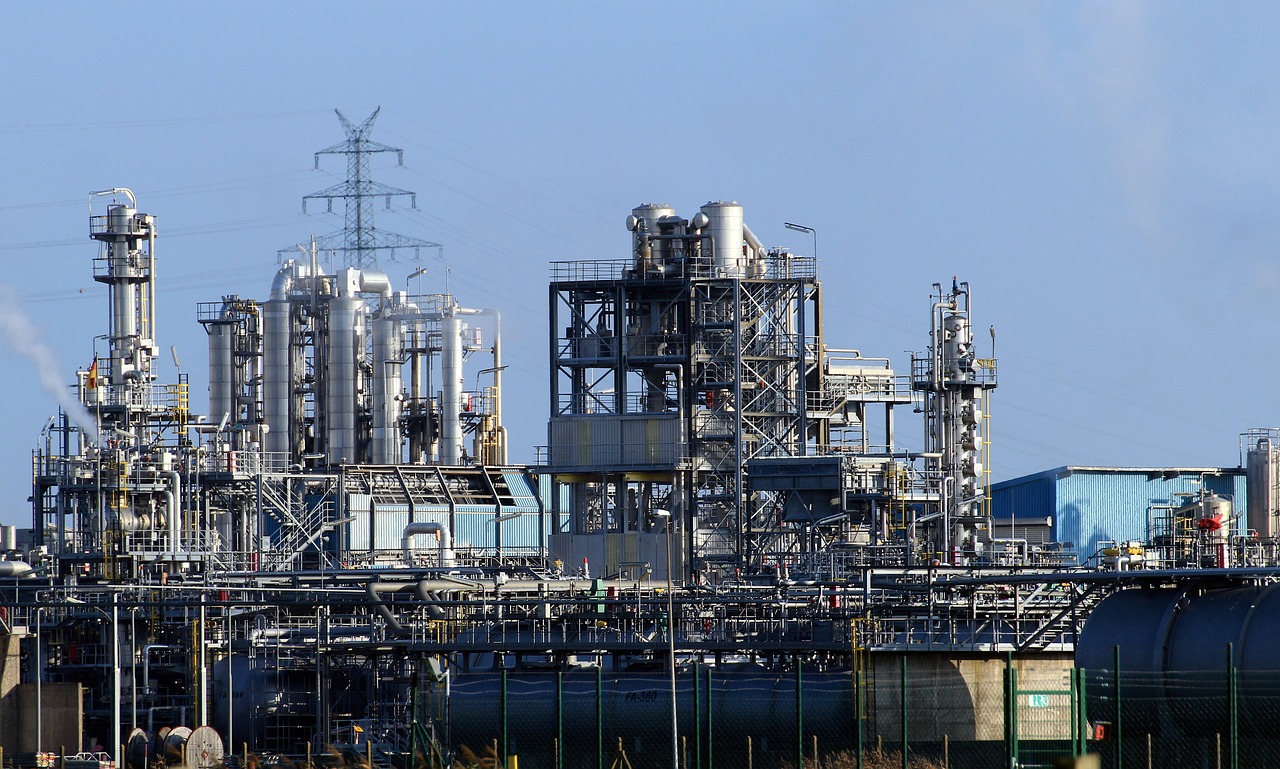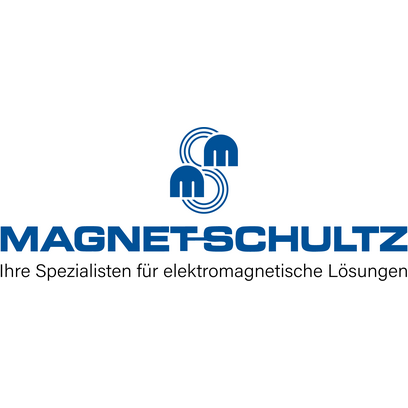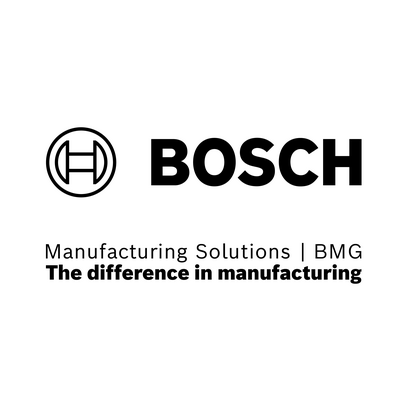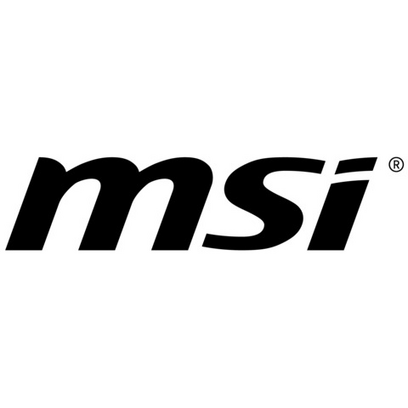
Latest NEWS
Exploring Key Trends in Hannover Messe 2024

Key Trends in Hannover Messe 2024
1. Industry 4.0 and Industrial Automation:
– The Role of Artificial Intelligence and Machine Learning in Industrial Production
– Robotics and Human-Robot Collaboration in Manufacturing Processes
– Industrial Internet of Things (IIoT) and Connected Devices in the Supply Chain
2. Clean and Sustainable Energy:
– Advancements in Renewable Energy Technologies such as Solar and Wind Power
– Energy Storage and Optimal Utilization in Industrial Settings
– Smart Grid Systems and Sustainable Energy Transmission
3. Artificial Intelligence and Data Analytics:
– Applications of AI and Machine Learning across Various Industries
– Industrial Data Analysis for Performance Improvement and Cost Reduction
– Data Security and Privacy Protection in Industrial Settings
4. 5G Networks and Industrial Communications:
– Reliable and High-Speed Wireless Communications for Industries and Factories
– Applications of 5G Networks in Industrial Automation, IIoT, and Augmented Reality
– Network Security and Cyber Threat Protection in Industrial Environments
5. Advanced Materials and Emerging Technologies:
– Nanomaterials and their Applications in Industries and Manufacturing
– Advanced Technologies such as 3D Printing, Advanced Robotics, and Sensors
– Innovative Technologies like Blockchain and Internet of Things (IoT)
These individual topics can serve as separate articles within the context of the overall theme of Hannover Messe 2024. By delving into the specifics of each trend and providing relevant information and insights, you can create engaging and informative content. “Key Trends in Hannover Messe 2024”
Industry 4.0 and Industrial Automation: Revolutionizing the Manufacturing Landscape
Key Trends in Hannover Messe 2024
Industry 4.0 represents a paradigm shift in the manufacturing sector, driven by the integration of advanced technologies and automation systems. This transformative concept, also known as the Fourth Industrial Revolution, is set to redefine industrial production, optimize processes, and enable unprecedented levels of efficiency and flexibility. In this article, we explore the key aspects of Industry 4.0 and delve into real-world examples that illustrate its impact on industrial automation.
1. Internet of Things (IoT) and Connectivity:
Industry 4.0 leverages the power of the Internet of Things (IoT) to connect machines, devices, and systems in the manufacturing environment. This interconnectedness enables seamless data exchange and real-time communication, facilitating the monitoring and control of production processes. For example, sensors embedded in machinery can collect data on performance, energy consumption, and maintenance needs, allowing for predictive maintenance and optimizing overall equipment effectiveness.
2. Artificial Intelligence (AI) and Machine Learning (ML):
AI and ML technologies play a crucial role in Industry 4.0 by enabling machines to learn, adapt, and make intelligent decisions. These technologies can analyze vast amounts of data, identify patterns, and optimize processes autonomously. For instance, AI-powered algorithms can optimize production schedules, predict quality issues, and dynamically adjust parameters to ensure optimal efficiency and quality.
3. Robotics and Collaborative Automation:
Industrial robotics is a cornerstone of Industry 4.0, with robots taking on increasingly complex tasks on the factory floor. Collaborative robots, or cobots, work alongside human operators, augmenting their capabilities and enhancing safety. These robots can perform repetitive, physically demanding tasks with precision and consistency, freeing up human workers for more complex and strategic roles.
4. Digital Twin and Virtual Simulation:
Digital twin technology creates a virtual replica of physical assets, allowing manufacturers to simulate and optimize processes before implementation. By creating a virtual environment, manufacturers can identify potential bottlenecks, test different scenarios, and optimize production lines. For example, a digital twin of a manufacturing plant can be used to simulate and optimize energy usage, reducing costs and environmental impact.
5. Supply Chain Optimization and Predictive Analytics:
Industry 4.0 extends beyond the factory floor to optimize the entire supply chain. Through real-time data exchange and analytics, manufacturers can gain insights into inventory levels, demand patterns, and logistics efficiency. This enables predictive analytics and demand-driven production, reducing lead times and improving customer satisfaction. For instance, by leveraging data and analytics, manufacturers can anticipate maintenance needs, optimize inventory levels, and streamline logistics for just-in-time delivery.
Conclusion:
Industry 4.0 and industrial automation are revolutionizing the manufacturing landscape, enabling unprecedented levels of efficiency, flexibility, and productivity. Through the integration of IoT, AI, robotics, and advanced analytics, manufacturers can optimize production processes, reduce costs, improve quality, and respond quickly to changing market demands. Real-world examples of Industry 4.0 implementation, such as predictive maintenance, collaborative robotics, and digital twins, demonstrate the tangible benefits of this transformative approach. Embracing Industry 4.0 is essential for manufacturers seeking to stay competitive and thrive in the digital age.
Clean and Sustainable Energy: Powering the Future of Industry
Key Trends in Hannover Messe 2024
Clean and sustainable energy solutions have become imperative in the face of climate change and the need to reduce carbon emissions. As industries seek to minimize their environmental impact, clean energy technologies are gaining prominence. In this article, we explore the significance of clean and sustainable energy in the industrial sector and showcase real-world examples of its implementation.
1. Solar Power:
Solar energy is one of the most widely adopted clean energy sources in the industrial sector. Industrial facilities are increasingly installing solar panels to generate electricity onsite and reduce their reliance on fossil fuels. Large-scale solar farms are also providing renewable energy to power industrial operations. For instance, a manufacturing plant can install solar panels on its rooftop to generate clean energy for its production processes, reducing both costs and carbon emissions.
2. Wind Energy:
Wind power is another key player in the realm of clean energy. Industrial facilities located in windy regions can harness the power of wind turbines to generate electricity. Wind farms, consisting of multiple turbines, can provide a significant and consistent energy supply for industrial operations. For example, a factory situated in a coastal area can benefit from offshore wind farms, ensuring a sustainable and reliable energy source.
3. Energy Storage:
Energy storage technologies, such as batteries, are crucial for enabling the integration of renewable energy into industrial settings. By storing excess energy generated from clean sources, industrial facilities can ensure a continuous power supply even when the sun is not shining or the wind is not blowing. Battery storage systems can balance energy demand and supply, increasing the efficiency and reliability of clean energy utilization.
4. Energy Efficiency and Demand Response:
In addition to adopting clean energy sources, industries are focusing on energy efficiency measures to optimize their energy usage. This includes implementing energy-efficient technologies, optimizing processes, and adopting energy management systems. Furthermore, demand response programs enable industries to adjust their energy consumption based on grid conditions and pricing signals, promoting a more sustainable and balanced energy ecosystem.
5. Electrification and Green Transportation:
The transition to clean energy extends beyond power generation. Industries are also embracing electrification in transportation to reduce emissions. Electric vehicles (EVs) and charging infrastructure are being adopted by industrial facilities, promoting a greener fleet and reducing reliance on fossil fuels. Additionally, technologies like hydrogen fuel cells are emerging as viable alternatives for heavy-duty transportation and long-range applications. “Key Trends in Hannover Messe 2024″
Conclusion:
Clean and sustainable energy solutions are driving the future of the industrial sector. From solar and wind power to energy storage, energy efficiency, and electrification, industries are embracing these technologies to reduce their carbon footprint and contribute to a more sustainable future. Real-world examples, such as industrial solar installations, wind farms, and energy storage projects, demonstrate the tangible benefits of clean energy adoption. By prioritizing clean energy, industries can simultaneously reduce costs, enhance their environmental stewardship, and lead the way towards a greener and more sustainable industrial landscape.
Artificial Intelligence and Data Analytics: Empowering Industries with Intelligent Insights
Key Trends in Hannover Messe 2024
Artificial Intelligence (AI) and Data Analytics have emerged as transformative technologies that are revolutionizing industries across the globe. By harnessing the power of AI algorithms and advanced data analytics techniques, organizations can unlock valuable insights, optimize operations, and make informed decisions. In this article, we delve into the capabilities and real-world applications of AI and data analytics, showcasing their profound impact on various industry sectors.
1. Predictive Maintenance and Asset Optimization:
AI and data analytics enable predictive maintenance, a proactive approach that uses machine learning algorithms to analyze historical data and predict equipment failures. By monitoring key parameters and identifying patterns, organizations can schedule maintenance activities in advance, minimizing downtime and optimizing asset performance. For example, in manufacturing, AI-powered analytics can detect anomalies in machine behavior, enabling timely maintenance and preventing costly breakdowns.
2. Intelligent Supply Chain Management:
AI and data analytics are transforming supply chain operations, improving efficiency, and reducing costs. By analyzing vast amounts of data from diverse sources, organizations can optimize inventory levels, anticipate demand fluctuations, and streamline logistics. For instance, AI algorithms can analyze historical sales data, market trends, and external factors (e.g., weather, events) to generate accurate demand forecasts, ensuring inventory optimization and minimizing stockouts.
3. Customer Insights and Personalization:
AI and data analytics empower organizations to gain deep customer insights, enabling personalized marketing and customer experiences. By analyzing customer data, behavior patterns, and preferences, organizations can tailor their offerings, recommendations, and marketing campaigns. For example, e-commerce platforms use AI algorithms to analyze customer browsing history and purchase patterns, providing personalized product recommendations and enhancing customer satisfaction.
4. Fraud Detection and Risk Management:
AI and data analytics play a crucial role in fraud detection and risk management across industries. By analyzing large volumes of data in real-time, organizations can identify anomalies, detect fraudulent activities, and mitigate risks. For instance, in the financial sector, AI algorithms can analyze transaction data, customer behavior, and historical patterns to detect fraudulent transactions, enhancing security and minimizing financial losses.
5. Autonomous Systems and Robotics:
AI and data analytics are driving advancements in autonomous systems and robotics, making processes more efficient and enhancing safety. In industries such as manufacturing, logistics, and healthcare, autonomous robots equipped with AI capabilities can perform complex tasks with precision and accuracy. For example, AI-powered robots can automate repetitive assembly line tasks, increase production efficiency, and reduce human error. “Key Trends in Hannover Messe 2024″
Conclusion:
Artificial Intelligence and Data Analytics are revolutionizing industries by providing intelligent insights, optimizing operations, and enhancing decision-making capabilities. From predictive maintenance and supply chain management to customer personalization and risk mitigation, the applications of AI and data analytics are vast and impactful. Real-world examples across industries showcase the transformative potential of these technologies. By embracing AI and data analytics, organizations can gain a competitive edge, drive innovation, and unlock new opportunities in the digital era.
5G Networks and Industrial Communications: Enabling the Future of Connected Industries
Key Trends in Hannover Messe 2024
5G networks have emerged as a game-changer in the realm of industrial communications, offering unprecedented speed, capacity, and reliability. With their transformative capabilities, 5G networks are poised to revolutionize industrial operations, enabling seamless connectivity, real-time data exchange, and the widespread adoption of advanced technologies. In this article, we explore the significance of 5G networks in industrial communications and showcase real-world applications that highlight their potential.
1. Ultra-Fast and Reliable Connectivity:
5G networks provide ultra-fast data transfer speeds and low latency, enabling near-instantaneous communication between industrial devices and systems. This high-speed connectivity facilitates real-time monitoring, control, and decision-making, enhancing overall operational efficiency. For example, in a smart factory, 5G enables real-time data transmission from sensors, machines, and robots, enabling instant analysis and response to optimize production processes.
2. Massive Machine-to-Machine (M2M) Communication:
The expansive capacity of 5G networks allows for massive machine-to-machine communication, enabling the seamless connectivity of a large number of IoT devices and industrial systems. This capability is crucial for industries implementing Industrial Internet of Things (IIoT) applications, where numerous devices need to interact and exchange data in real-time. For instance, in a smart grid, 5G enables efficient communication between sensors, smart meters, and energy management systems, improving grid stability and optimizing energy distribution.
3. Enhanced Remote Operations and Augmented Reality (AR):
5G networks empower remote operations by providing reliable and high-bandwidth connections. Industrial sectors such as manufacturing, energy, and healthcare can leverage 5G to enable remote monitoring, control, and maintenance of critical infrastructure and equipment. Additionally, 5G’s low latency and high data rates support the adoption of augmented reality (AR) applications in industrial settings. AR technology can provide real-time guidance, remote assistance, and immersive training experiences for workers, enhancing productivity and safety.
4. Edge Computing and Distributed Intelligence:
5G networks facilitate the implementation of edge computing architectures, where data processing and analysis occur closer to the source, reducing latency and enabling real-time decision-making. This distributed intelligence is particularly valuable in industrial environments where instant responses are vital. For example, in a smart warehouse, 5G enables edge computing to process sensor data in real-time, optimizing inventory management, and reducing response times.
5. Enhanced Safety and Autonomous Systems:
The high reliability and low latency of 5G networks are crucial for the deployment of autonomous systems and safety-critical applications in industries such as transportation and manufacturing. For instance, in autonomous vehicles or drones, 5G enables real-time communication with other vehicles, infrastructure, and control centers, ensuring safe and efficient operations. Furthermore, 5G networks support the implementation of advanced safety systems, such as collision avoidance and predictive maintenance, enhancing overall workplace safety.
Conclusion:
5G networks are set to transform industrial communications, enabling a new era of connectivity, efficiency, and innovation. With ultra-fast speeds, massive machine-to-machine communication, enhanced remote operations, and distributed intelligence, 5G empowers industries to embrace advanced technologies and optimize their operations. Real-world applications, such as smart factories, remote monitoring, and augmented reality, showcase the tangible benefits of 5G in industrial settings. By harnessing the potential of 5G networks, industries can unlock new opportunities, improve productivity, and drive the future of connected industries.
Key Trends in Hannover Messe 2024


